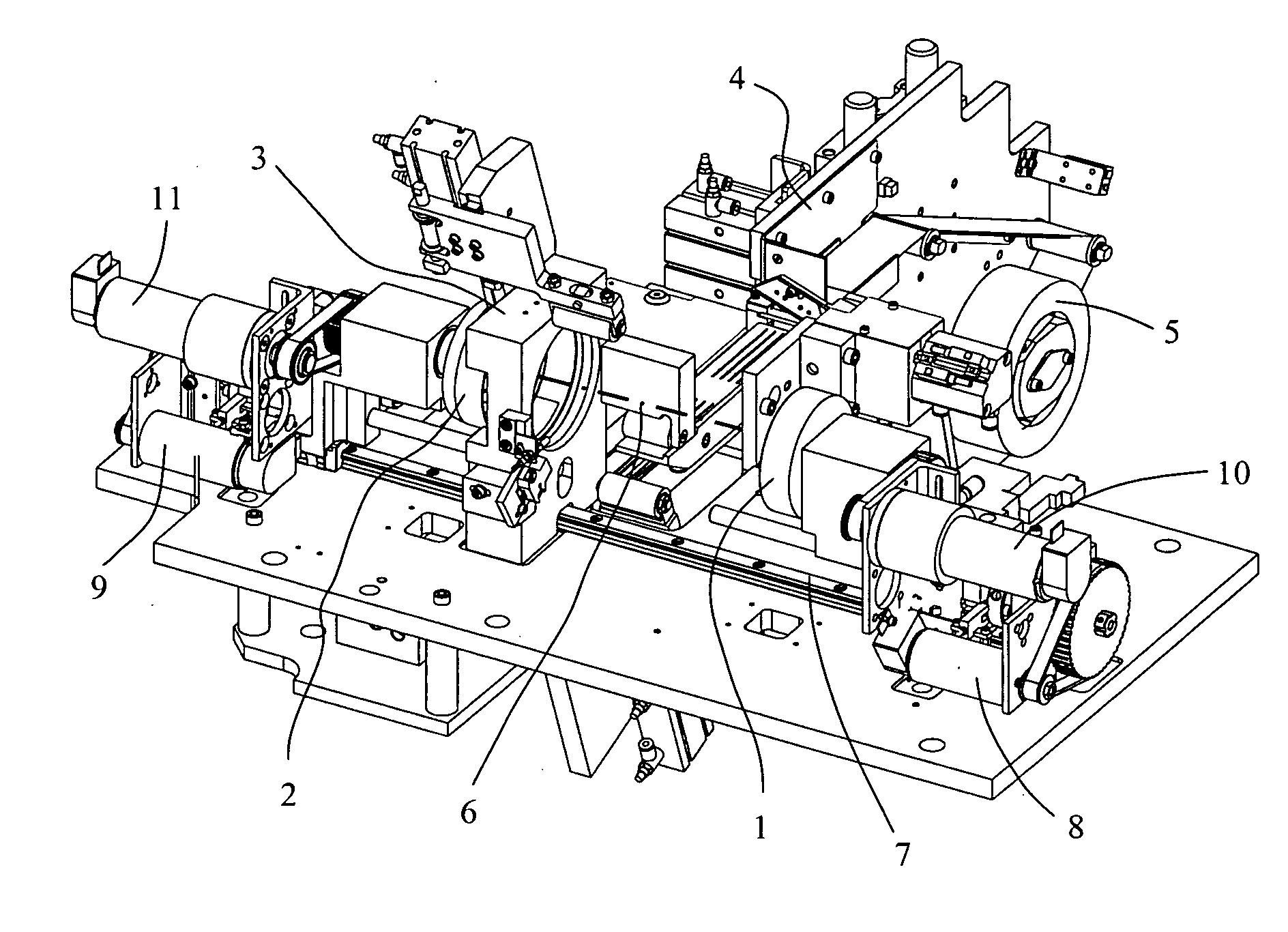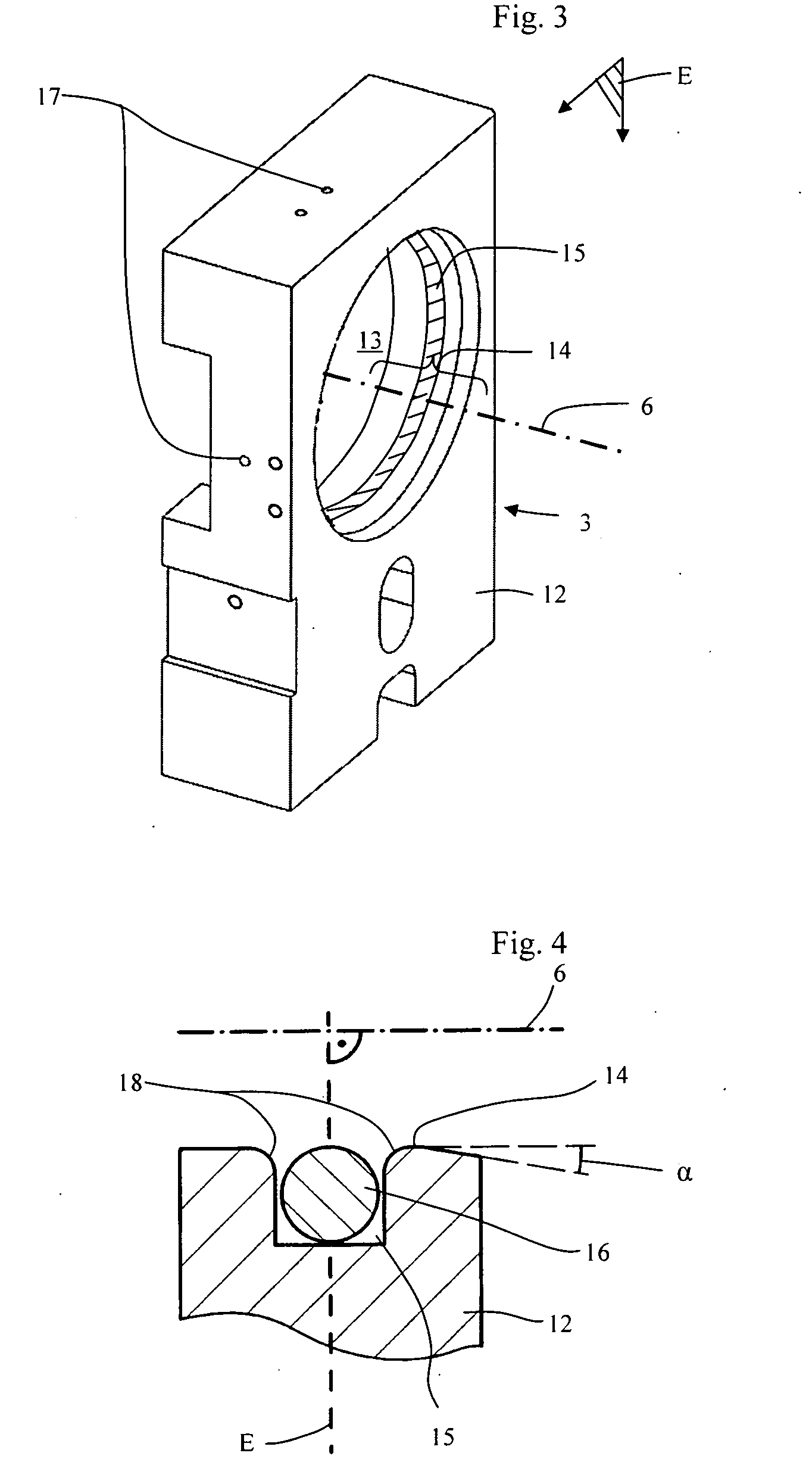Device for aligning two shell molds
a technology for aligning devices and shell molds, applied in the direction of dough shaping, manufacturing tools, instruments, etc., can solve the problem of over-determined centering devices
- Summary
- Abstract
- Description
- Claims
- Application Information
AI Technical Summary
Benefits of technology
Problems solved by technology
Method used
Image
Examples
Embodiment Construction
[0026]FIGS. 1 and 2 show a perspective view of a device that serves to align the optical axes of a first shell mold and a second shell mold relative to each other and to position them at a predetermined distance and then to join them together into a composite by means of sticking a tape along the edge of the two shell molds. FIG. 1 shows the entire device with the device for applying the tape. FIG. 2 shows the same device for reasons of illustrative clarity without the device for applying the tape. The device comprises a gripper 1 for holding the first shell mold, a gripper 2 for holding the second shell mold, a centering station 3 and a device 4 for feeding and applying the tape 5. The two grippers 1 and 2 can be moved along a predetermined axis 6 and can be rotated on the axis 6 individually as well as together. The two grippers 1 and 2 preferably bear on a common guide rail 7. The axis 6 runs parallel to the guide rail 7. A first motor 8 serves to move the first gripper 1 along t...
PUM
| Property | Measurement | Unit |
|---|---|---|
| distance | aaaaa | aaaaa |
| optical | aaaaa | aaaaa |
| gravity | aaaaa | aaaaa |
Abstract
Description
Claims
Application Information
 Login to View More
Login to View More - R&D
- Intellectual Property
- Life Sciences
- Materials
- Tech Scout
- Unparalleled Data Quality
- Higher Quality Content
- 60% Fewer Hallucinations
Browse by: Latest US Patents, China's latest patents, Technical Efficacy Thesaurus, Application Domain, Technology Topic, Popular Technical Reports.
© 2025 PatSnap. All rights reserved.Legal|Privacy policy|Modern Slavery Act Transparency Statement|Sitemap|About US| Contact US: help@patsnap.com



